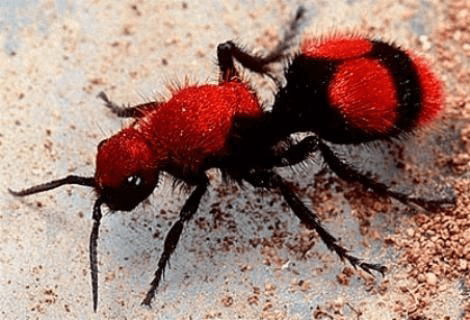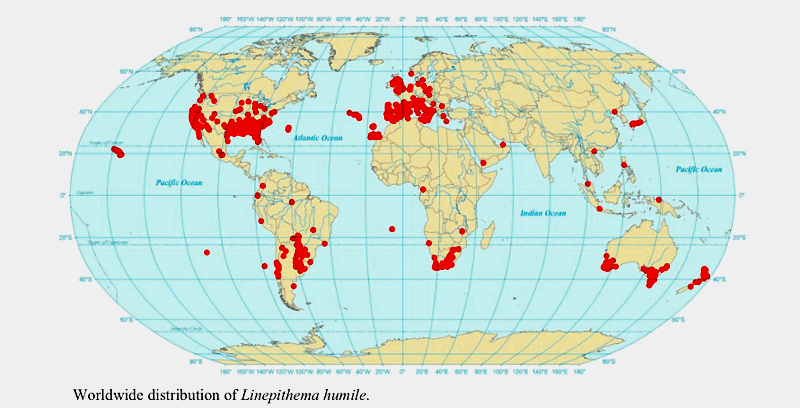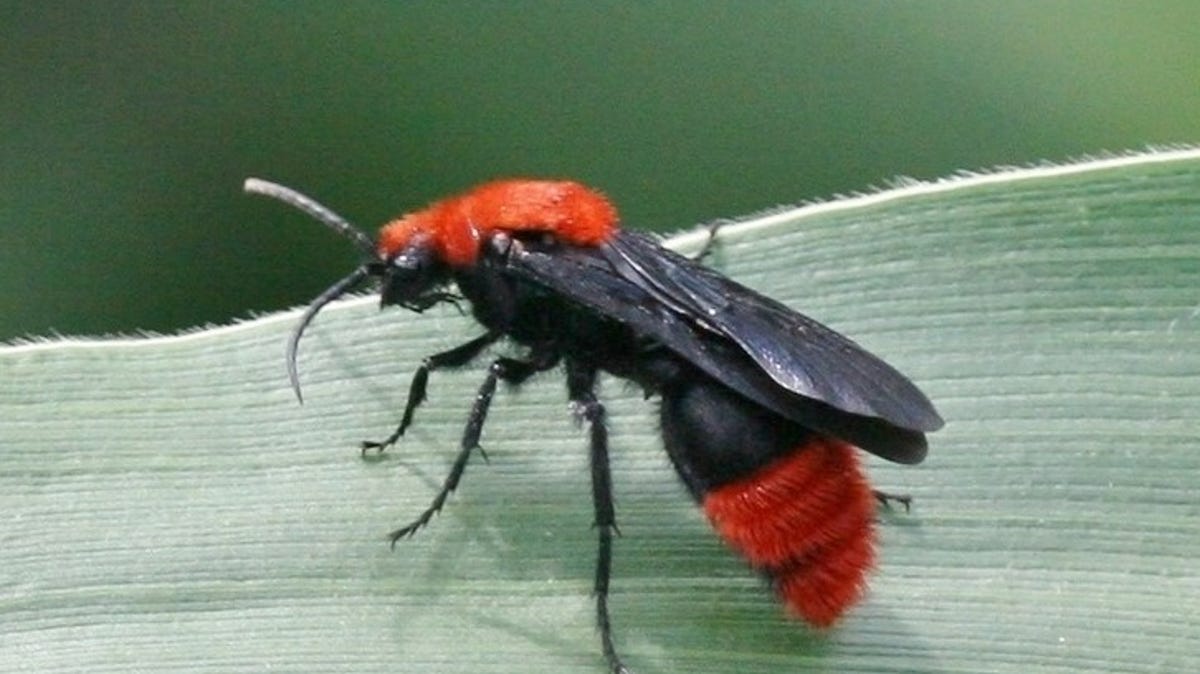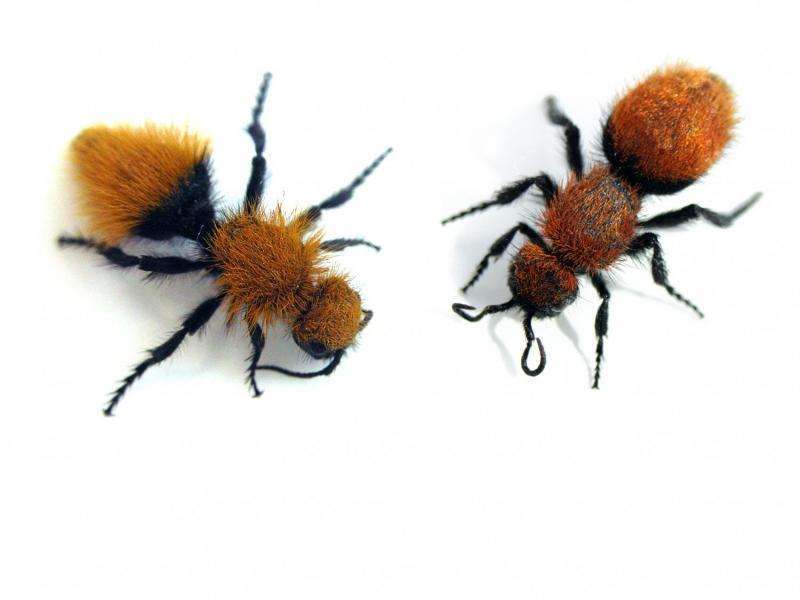Velvet Ant

VELVET ANT:
CONTENTS:
(1) KPCOFGS
(2) Nº of SPECIES
(3) SIZES
(4) LIFESPAN
(5) WORKER'S LIFESPAN
(6) EGG to ADULT
(7) COLONY SIZE
(8) STING
(9) LOCATION MAP
(10) APPEARANCE
KPCOFGS:
Kingdom: Animalia
Phylum: Arthropoda
Class: Insecta
Order: Hymenoptera
Family: Mutillidae
Genus: Dasymutilla
Species: Dasymutilla occidentalis
Before we further proceed with the article, it must be cleared what the Velvet Ant is. The Velvet Ant is not exactly an ant, it is a wasp. However, the only velvet ants that have wings are males. Therefore, when a female Velvet Ant is seen, it is often a female (because it cannot fly and therefore escape as fast as males) and is confounded with an ant. Moreover, ants can have some hairs, so some may think of it as a 'hairy ant'.
However, this confusion is completely normal if this genus is not known, as wasps and ants are from the same order (Hymenoptera), which suggests they have many similarities, such as the shapes of their bodies.
Nº of SPECIES: more than 7,000 species of Mutillidae.
SIZES:
Usually from 0,3175 cm to 2,54 cm or 1/8 inches to 1 inch.
Although there is a great variation within species.
LIFESPAN:
(unknown)
WORKERS' LIFESPAN:
The velvet ant is a solitary wasp, which only encounter other individuals from the same species in order to mate. There are no workers, since wasps from this species do not form colonies.
EGG to ADULT:
2-3 days until the eggs hatch into larvae.
Between 12-18 days after hatching, larvae starts metamorphosis.
COLONY SIZE:
These wasps are solitary and are just looking for food and for reproduction.
STING:
On Schmidt's Insect Sting Pain index (from 1 to 4), the velvet ant occupies a position with a 3, lasting the pain around 30 minutes. Its sting is so painful that this wasp is also known as "cow killer".
It is one of the less poisonous stings amongst all wasps, being 600 times less poisonous than that of a harvester ant. So it is harmless.
LOCATION MAP:

APPEARANCE:
Male:

Females:
 As its name suggests, the velvet ant is covered by dense hair, giving it an appearance similar to that of an ant. This is not so true for males, since they have wings, which resemble more to wasps.
As its name suggests, the velvet ant is covered by dense hair, giving it an appearance similar to that of an ant. This is not so true for males, since they have wings, which resemble more to wasps.
Different species of velvet ants can vary slightly in color, ranging from tones of vivid red to orange grayish. (see above)
Also, each species may have quite a lot of differences between them, but the easiest way to distinguish two velvet ants from two species is by looking at the abdomen (majorly). This is the part of the body where the sting is located. The colors of the abdomen for a species will follow a specific pattern, which may also extend to other parts of the velvet ant's body, such as the head.
If coming across a velvet ant, most probably it will be a female, since these lack wings to fly, however, differently to males, they can sting. It must be taken into account that its sting is amongst one of the painfullest in the world, scoring a 3 out of 4 in Schmidt's Pain Index. Therefore, it is recommended to observe this wasp from a safe distance.
(For more information about the websites consulted in this article, see the Bibliography at the bottom of the website.)
